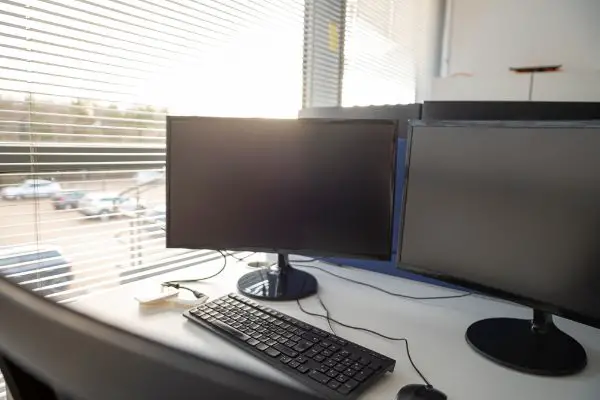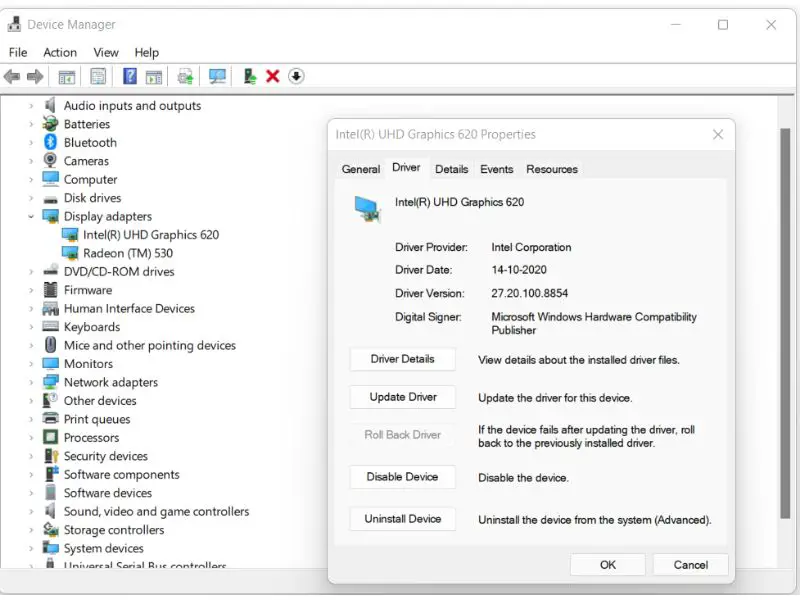Disclaimer: This post may contain affiliate links, meaning we get a small commission if you make a purchase through our links, at no cost to you. For more information, please visit our Disclaimer Page.
A monitor is an output device that displays information in visual form. The image on the screen is created by a tiny light at the back of the screen called a pixel.
Monitors usually use digital signals to communicate with computers, which is why they need drivers. In this blog post, we will answer five common questions about monitor drivers.
Table of Contents
1. What is the Purpose of Drivers in a Monitor?
Drivers are small pieces of software that tell your computer how to communicate with a piece of hardware.
In the case of monitors, the driver tells your computer how to send information to the monitor so that it can display an image.
However, today, most monitors are plug and play, which means that you don’t need to install a driver for them. Windows will automatically detect the monitor and install the appropriate driver.
Old monitors may not be plug and play, in which case you’ll need to install a driver from the manufacturer’s website.
Do I Need To Install Drivers for Monitor?
You might not need to install drivers for your monitor if it is plug-and-play. However, if your monitor is not plug and play, you will need to install a driver from the manufacturer’s website.
It’s also a good idea to keep your drivers up-to-date in case there are any bug fixes or performance improvements.
You can update your drivers using a driver update utility, Windows Update, or the manufacturer’s website.
2. What Happens if I Don’t Install a Monitor Driver?
If you don’t install a monitor driver, your computer will still be able to communicate with the monitor, but it won’t be able to take full advantage of its features.
For example, you might not be able to adjust the screen resolution or the refresh rate.
Sometimes, you might not be able to see an image on the screen at all.
So it’s always best to install a monitor driver if one is available.
There are a few ways to get monitor drivers. The first is to download them from the manufacturer’s website. The second is to use a driver update utility, which will scan your computer for drivers and install the latest ones. The third is to use Windows Update, which will sometimes have monitor drivers available.
If you can’t find a driver for your monitor, you might be able to use generic drivers that come with Windows.
These drivers might not offer all of the features of a specific driver, but they can still provide basic functionality.
3. Where Can I Check My Monitor’s Drivers?
If you’re not sure whether you need to install a driver for your monitor, the best place to check is the manufacturer’s website. They should have a list of drivers that are available for download. You can also use a driver update utility or Windows Update to check for drivers.
On your PC or laptop, you can also check the Device Manager to see if there are any driver updates available.
You can also find the Device Manager by going to Start > Control Panel > Hardware and Sound > Device Manager.
Click the monitor that you want to update and then click Update Driver Software.
If there are any updates available, they will be downloaded and installed automatically.
You can also try using generic drivers that come with Windows.
To do this, go to Start > Control Panel > Hardware and Sound > Device Manager.
4. What Does Updating the Monitor Drivers Do?
Updating your monitor drivers can do a few things. For one, it can improve the quality of your image display. Additionally, it can help to resolve any issues you may be having with your monitor or display adapter. Finally, updating your monitor drivers can also help improve your overall system performance.
If you’re not sure whether you need to update your monitor drivers, it’s always a good idea to check with the manufacturer of your monitor or display adapter.
They’ll be able to tell you whether or not there are any updated drivers available for your specific model.
5. When Should I Update My Monitor Drivers?
You should update your monitor drivers if you’re experiencing any issues with your monitor or display adapter. Additionally, if you’re noticing a decline in the quality of your image display, it might be a good idea to update your drivers.
You can also check for updates on the manufacturer’s website or use a driver update utility to scan for and install the latest drivers.
Updating your monitor drivers is a fairly easy process, and it’s always a good idea to keep your drivers up-to-date in case there are any bug fixes or performance improvements.
What Can Go Wrong When Updating Monitor Drivers?
There are a few things that can go wrong when you update your monitor drivers. For one, you might install the wrong driver, which can cause problems with your display. Additionally, if you don’t have the latest service pack or patch installed on your computer, you might not be able to install the updated driver.
Finally, if you’re not careful, you might accidentally delete or overwrite an existing driver, which can cause even more problems.
When updating your monitor drivers, it’s always a good idea to create a backup of your existing drivers first. That way, if anything goes wrong, you can restore your system to its previous state.
Final Thoughts
Updating your monitor drivers can be a helpful way to improve the quality of your image display, resolve any issues you’re having with your monitor, and improve your overall system performance.
If you’re not sure whether or not you need to update your drivers, it’s always a good idea to check with the manufacturer of your monitor or display adapter.
You can also create a backup of your existing drivers before you update them, just in case anything goes wrong.


